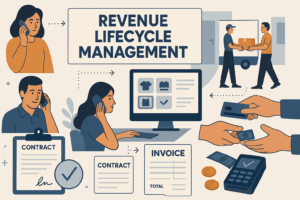The Everything Electric shows are always a high-voltage spectacle. It’s a glittering showcase of the future: the sleek lines of the Polestar 4, the aggressive entry of Chinese disruptors like Xpeng and Zeekr, and the sheer volume of test drives proving that Australian consumers are well past the ‘if’ stage and firmly in the ‘when’ stage of EV adoption.
But if you look past the glossy paint and the impressive battery range figures, the Melbourne show reveals a crucial, often overlooked reality: the ultimate determinant of success for this new generation of EV OEMs won’t be who has the best battery chemistry, but who has the best Customer Experience (CX).
The transition to electric is far more than a hardware upgrade; it’s a complete shift in the retail, ownership, and aftercare ecosystem. For OEMs and their local distributors, the challenge is clear: how do you deliver a consistent, anxiety-free experience from the first click on a website to the tenth year of servicing, especially when the very nature of sales and service is being redefined?
The Art of the Digital Nurture: Building Trust from Zero
Many of the most exciting brands at Everything Electric are new entrants to the Australian market. They don’t have 50 years of brand loyalty or a dealer network spanning every regional city to lean on. They are starting from near zero trust, selling a product that still requires significant education around charging, range, and cost of ownership.
For these new EV players, customer nurturing is no longer a marketing luxury—it’s a foundational requirement for survival. The lead-to-owner journey is highly consultative and deeply digital.
This requires a sophisticated approach to data and communication. When a prospect signs up for a test drive at the Melbourne show, that engagement must immediately trigger a personalized digital journey, not just a generic email blast. This journey must:
- Educate: Provide tailored information on home charging solutions based on their stated housing situation (apartment vs. house).
- Reassure: Address anxieties about road trips and charging infrastructure with region-specific guides.
- Personalize: Move them from general interest to specific model configuration based on their demographic and usage data.
This high-touch, data-driven nurturing is only possible when the OEM’s core systems—their Customer Relationship Management (CRM) platform—is perfectly synchronized. The CRM needs to track every interaction, from website clicks to test drive feedback, ensuring that when the customer finally engages a sales representative (virtual or physical), that representative is instantly armed with a 360-degree view of their entire learning journey. This seamless digital handover is the first, most critical test of the new EV customer experience.
The Service Speed Barrier: Why Turnaround Time is the New Range Anxiety
The second, and perhaps most urgent, operational challenge for the accelerating EV market is servicing infrastructure. EV owners, who quickly become accustomed to the low maintenance needs of their vehicles, still expect certainty around reliable service when something does go wrong. This is not straightforward for new OEM entrants with low spares inventories.
To deliver low-turnaround times, OEMs and their chosen service partners must solve three complex logistical problems:
- Skills Gap: Rapidly upskill or train enough high-voltage certified technicians to meet growing demand. A lack of qualified hands directly translates to longer wait times.
- Diagnostics and Tooling: Equip service centres with specialized diagnostic software and heavy-duty tooling necessary to safely handle and repair high-voltage battery packs and complex thermal management systems.
- Parts & Battery Logistics: Establish hyper-efficient logistics chains for distributing specialized, expensive components—especially batteries, which may require local warehousing, advanced diagnostic analysis, or regional reconditioning centres to avoid shipping them overseas for every single fault.
Customers don’t care how complex the battery issue is; they care about when they get their car back. The OEM that can confidently promise—and deliver—a three-day maximum service turnaround will build generational loyalty.
The Platform Imperative: Ensuring the 360-Degree View
The threads of sales nurturing and efficient servicing converge on one central point: the OEM’s choice of enterprise platform, including their CRM, back-office systems and automation tools.
In the past, the customer data resided in silos: sales data with the dealership, service history with the workshop, and vehicle telemetry locked in the car’s ECU. The EV model demands that all these silos be unified into a single, golden customer record. Great service also relies on understanding the circle of ownership and use – who is the owner, who are the drivers, who finances and who makes the decisions.
This unified circle of records is essential because OEMs are experimenting with different sales models in Australia:
- Agency/Direct Sales: The OEM controls the entire price, inventory, and customer relationship, using physical hubs (like those promoting at Everything Electric) and online portals for transactions.
- Traditional Dealership: The OEM relies on established dealer partners for sales and service.
Regardless of the model chosen, the customer’s experience expectation is the same: consistency. This is only more paramount as new luxury brands enter a competitive market – those clients only accept great service.
A buyer who configures their car online (Direct Model) and then takes it to a third-party service agent (Dealer Model) should receive the exact same quality of digital communications, the same service appointment experience, and the same personalised follow-up. This can only happen if the underlying platform can seamlessly integrate:
- Vehicle Telemetry Data: Real-time data on battery health and potential faults.
- Sales CRM: The record of their purchase and preferences.
- Service Management System: The current status and history of their repairs.
- Customer Communication Platform: Delivering proactive updates via the owner app, email, or SMS.
The right platform acts as the connective tissue, ensuring that whether a customer is dealing with an OEM-owned entity or an authorised partner, the experience is dictated by the brand, not the business model.
In Melbourne, we saw the tip of the EV iceberg: gorgeous, highly capable vehicles. But the real work is happening beneath the surface. The brands that master digital nurturing, guarantee low-turnaround times, and strategically invest in a unified digital platform will be the ones that win the loyalty of Australian drivers long after the lights dim at the Everything Electric show.
The electric future is here, but the customer experience race is just beginning.




